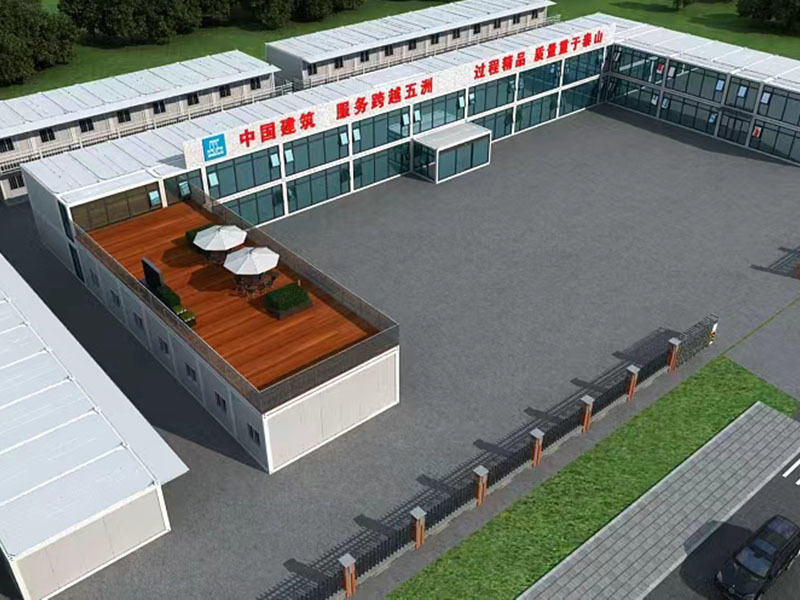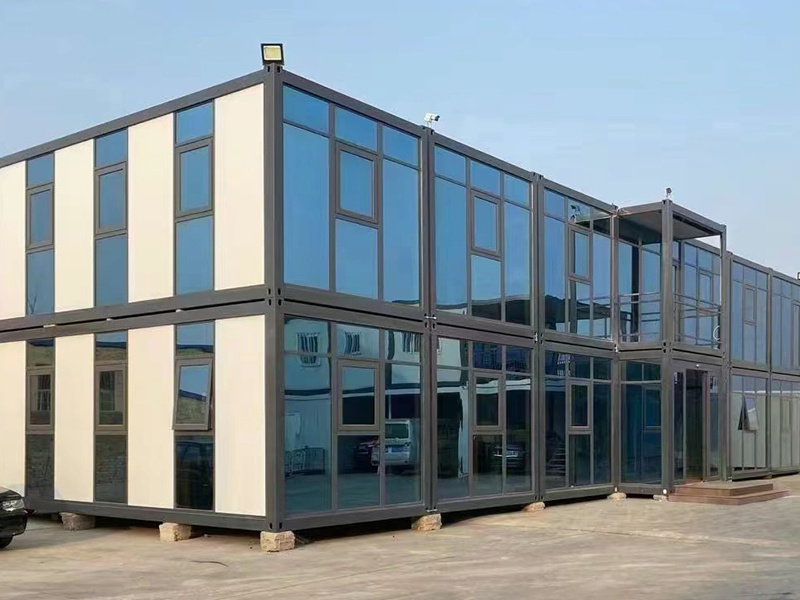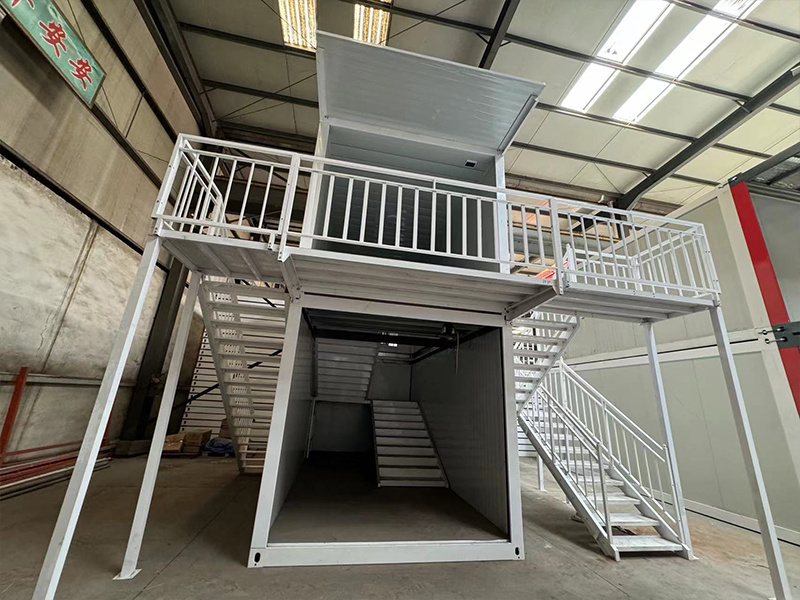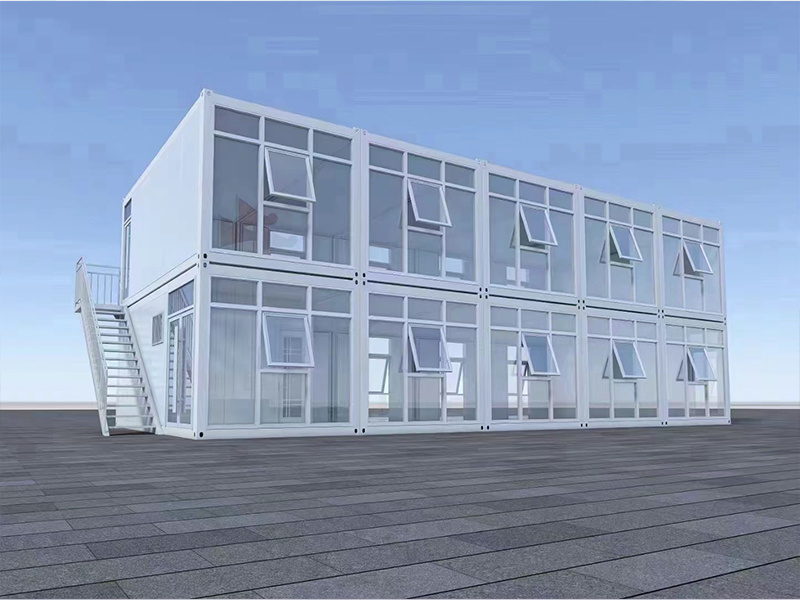Why Choosing the Right Containers for Construction Sites Matters
Release Time:
Jul 14,2025
Why Choosing the Right Containers for Construction Sites Matters Table of Contents Introduction The Importance of Containers in Construction Types of Containers for Construction Sites Shipping Containers Storage Containers Dumpsters Factors to Consider When Choosing Containers
Why Choosing the Right Containers for Construction Sites Matters
Table of Contents
- Introduction
- The Importance of Containers in Construction
- Types of Containers for Construction Sites
- Factors to Consider When Choosing Containers
- Benefits of Using Appropriate Containers
- Common Mistakes When Selecting Containers
- Frequently Asked Questions
- Conclusion
Introduction
In the construction industry, efficiency and safety go hand in hand. One critical yet often overlooked aspect of construction management is the selection of appropriate containers for storing materials and equipment. Choosing the right containers can significantly impact project timelines, budget adherence, and overall site safety. This article explores why selecting the right containers for construction sites is paramount and how it can streamline operations, enhance security, and promote sustainability.
The Importance of Containers in Construction
Containers serve as fundamental elements on construction sites. They act as storage spaces, waste management solutions, and even mobile offices. The right containers can aid in organizing materials, preventing theft, and ensuring compliance with industry regulations. By understanding the importance of these storage solutions, construction managers can make informed decisions that benefit their projects.
Types of Containers for Construction Sites
There are various types of containers available for construction sites, each designed to fulfill specific functions. Below, we delve into the most common types:
Shipping Containers
Shipping containers are versatile and robust storage solutions commonly used on construction sites. They are typically made from steel, providing excellent durability and security. These containers can be used for storing heavy machinery, tools, and materials while protecting them from the elements. Additionally, shipping containers can be repurposed as temporary offices or break rooms, enhancing worker comfort.
Storage Containers
Storage containers are specifically designed for on-site storage of construction materials and tools. They come in various sizes and configurations, allowing for efficient organization. Unlike shipping containers, storage containers may include features like shelves, compartments, and ventilation systems to accommodate different types of materials safely.
Dumpsters
Waste management is crucial during construction projects. Dumpsters provide a designated area for disposing of debris, reducing clutter and ensuring a clean working environment. Utilizing the right size and type of dumpster can help streamline waste collection and minimize the risk of accidents related to debris on the site.
Factors to Consider When Choosing Containers
Selecting the right containers goes beyond merely picking one that looks appealing. Several factors must be considered to ensure that the containers meet the specific needs of the construction project.
Size and Capacity
The size and capacity of the container are crucial factors to evaluate. Consider the volume of materials that need to be stored. A container that is too small will lead to overcrowding and disorganization, while one that is too large may waste space and resources. Assess the types of materials and tools that will be stored to determine the appropriate size.
Material and Durability
Containers come in various materials, including steel, wood, and plastic. Steel containers are typically the most durable, providing resistance to theft and harsh weather conditions. Assess the environmental factors that could affect the container, such as exposure to moisture or temperature fluctuations, to choose the most suitable material.
Security Features
On construction sites, tools and materials are often at risk of theft. Choosing containers with robust security features, such as lockable doors and reinforced walls, can help safeguard valuable equipment. Consider additional security measures like surveillance cameras or on-site personnel to monitor container areas.
Accessibility
Easy access to containers is essential for maintaining workflow efficiency. Containers should be strategically placed to minimize the time spent retrieving materials. Consider the layout of the construction site and the locations of various teams to ensure that containers are accessible without hindering productivity.
Benefits of Using Appropriate Containers
Utilizing the right containers offers numerous benefits that can positively impact construction projects.
1. **Enhanced Organization**: Proper containers allow for systematic storage of materials, reducing the time and effort spent searching for tools and supplies.
2. **Increased Safety**: Well-organized containers can help prevent accidents related to trip hazards and falling objects, promoting a safer work environment.
3. **Cost-Effectiveness**: Investing in the right containers can reduce waste, minimize the risk of damage, and lower overall project costs.
4. **Regulatory Compliance**: Many construction projects must adhere to specific safety regulations. Proper containers can help ensure compliance with local laws and standards.
5. **Sustainability**: Using durable, long-lasting containers can contribute to sustainable practices by reducing the need for frequent replacements and minimizing waste.
Common Mistakes When Selecting Containers
Even the most seasoned construction managers can make mistakes when selecting containers. Here are a few common pitfalls to avoid:
1. **Underestimating Storage Needs**: Failing to accurately assess storage requirements can lead to overcrowded or insufficient storage solutions.
2. **Neglecting Security**: Overlooking the importance of security features can result in significant losses due to theft or vandalism.
3. **Choosing Poor Quality**: Prioritizing cost over quality can lead to purchasing containers that do not withstand the rigors of a construction site.
4. **Ignoring Local Regulations**: Not considering local regulations regarding storage and waste management can lead to fines and project delays.
5. **Overcomplicating Accessibility**: Poorly planned container placement can hinder workflow and lead to inefficiencies on the site.
Frequently Asked Questions
1. What are the best containers for storing construction materials?
The best containers for storing construction materials are typically made of durable materials like steel and should be chosen based on size, security features, and accessibility.
2. How do I determine the right size container?
To determine the right size container, assess the volume and types of materials you will store and plan for future needs to avoid overcrowding.
3. Can shipping containers be used as temporary offices?
Yes, shipping containers can be repurposed as temporary offices or break rooms, offering a cost-effective solution for on-site office needs.
4. How often should containers be inspected?
Containers should be inspected regularly, ideally on a monthly basis, to ensure that they remain secure and in good condition.
5. What regulations should I be aware of when using containers on construction sites?
Regulations vary by location but often include safety standards for materials storage, waste management, and site security. Check with local authorities to ensure compliance.
Conclusion
Choosing the right containers for construction sites is not merely a logistical decision; it is a strategic move that can enhance efficiency, safety, and compliance throughout the project lifecycle. By understanding the various types of containers available, considering essential factors such as size, material, and security, and recognizing the potential pitfalls, construction managers can make informed decisions that lead to successful project outcomes. Investing time and resources into selecting the appropriate containers ultimately pays off in improved organization, reduced costs, and a safer working environment.
Key words:
What Else Might You Learn?











